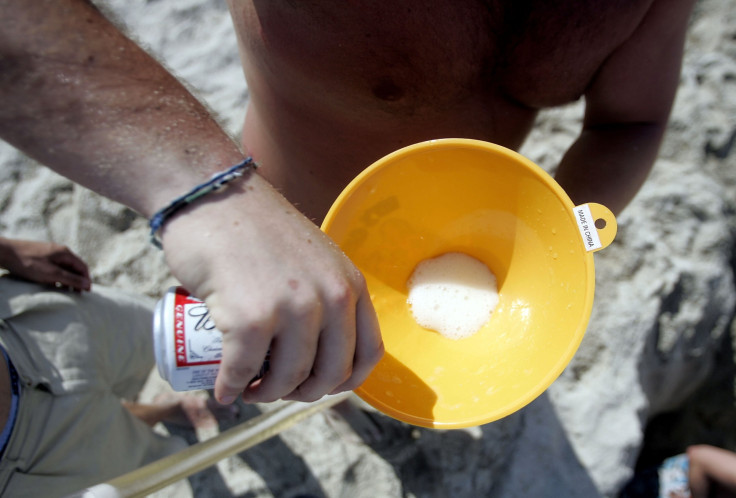College Students’ Alcohol Consumption Changes Throughout The Year: The Peaks Of Binge Drinking

To college students, drinking alcohol is a rite of passage; roughly four out of five students admit to doing it. But to the National Institute on Alcohol Abuse and Alcoholism (NIAAA), it's a persisting problem throughout America's colleges. The NIAAA finds alcohol abuse, including binge drinking, negatively affects students’ academic and social lives at increasingly high rates. Now, a team from the Research Society on Alcoholism may have new insight into college drinking, including the times students drink the most.
Researchers first wondered if college students drink more in the summer or the winter. So in January 2014, they measured alcohol consumption among 462 college freshmen (290 females and 172 males) eight times over the course of 55 weeks, just over a year. They made note of events where they may be more likely to drink, including campus festivals, the start and end dates of semesters and new school years, as well as summer breaks when most students are back home.
According to the findings, published in the journal Alcoholism: Clinical and Experimental Research, there's a distinct fluctuation in students' alcohol consumption. Perhaps unsurprisingly, they saw a 29 percent drop in alcohol consumption during the summer — a time when most students are off campus and out of the drinking environment. But once students returned to school in the fall, their alcohol consumption spiked 31 percent. It spiked again, by 18 percent, around spring break up until an on-campus festival.
Drinking alcohol isn’t a problem as much as the groceries list of results that come with it. Aside from the 25 percent of college students who report missing class, falling behind, and performing poorly on exams, papers, and receiving overall lower grades, drinkers risk physical, mental, and sexual consequences. According to the NIAAA, every year another 1,825 college students between the ages of 18 and 24 die from alcohol-related injuries, nearly 600,000 students insure unintentional injuries while under the influence of alcohol, and more than 690,000 students are assaulted by another student who has been drinking.
But it doesn’t stop there. In one calendar year, more than 97,000 students become victims of alcohol-related sexual assault or date rape. According to the National Sexual Violence Resource Center, more than 90 percent of sexual assault victims on college campuses do not report the assault. And when it comes to suicide, between 1.2 and 1.5 percent of students have tried to commit suicide while drinking or doing drugs. Another 150,000 students report developing alcohol-related health problems during their time in college.
Previous research suggests the first six weeks of freshmen year is when a student is most likely to experience heavy drinking and other alcohol-related consequences because of peer expectations and other social pressures. However, now that researchers have found drinking peaks and valleys throughout the year, colleges and policy makers could use the timeline to target specific behaviors in order to reduce the frequency of negative outcomes. This includes but is not limited to when more students are likely to pour one out.
Source: Schuckit MA, Smith TL, Clausen P, Skidmore J, Shafir A, and Kalmijn J. Drinking Patterns Across Spring, Summer, and Fall in 462 University Students. Alcoholism: Clinical and Experimental Research. 2016.



























